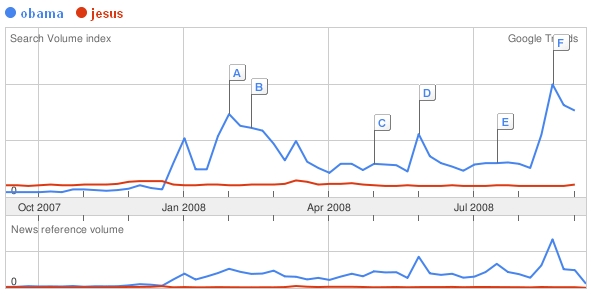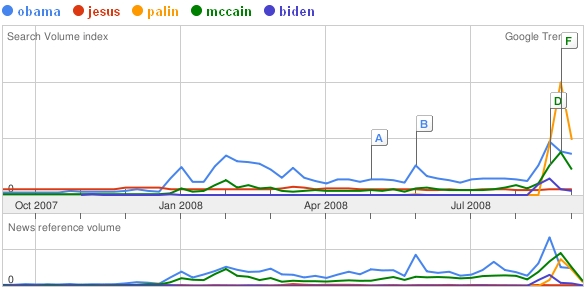Barack Obama argues that John McCain “hurt everyday workers with his longtime support for deregulation,” according to Politico.
Thomas Frank adds,
There is simply no way to blame [the failure of several large financial institutions], as Republicans used to do, on labor unions or over-regulation. No, this is the conservatives’ beloved financial system doing what comes naturally. Freed from the intrusive meddling of government, just as generations of supply-siders and entrepreneurial exuberants demanded it be, the American financial establishment has proceeded to cheat and deceive and beggar itself — and us — to the edge of Armageddon. It is as though Wall Street was run by a troupe of historical re-enactors determined to stage all the classic panics of the 19th century.
But as Steve Forbes points out, the “easy-money” policy of the Federal Reserve helped financial institutions pile up debt and bad assets.
According to former FDIC Chairman William M. Isaac,
The biggest culprit is a change in our accounting rules that the Financial Accounting Standards Board and the SEC put into place over the past 15 years: Fair Value Accounting. Fair Value Accounting dictates that financial institutions holding financial instruments available for sale (such as mortgage-backed securities) must mark those assets to market. That sounds reasonable. But what do we do when the already thin market for those assets freezes up and only a handful of transactions occur at extremely depressed prices?
The answer to date from the SEC, FASB, bank regulators and the Treasury has been (more or less) “mark the assets to market even though there is no meaningful market.” The accounting profession, scarred by decades of costly litigation, just keeps marking down the assets as fast as it can.
This is contrary to everything we know about bank regulation. When there are temporary impairments of asset values due to economic and marketplace events, regulators must give institutions an opportunity to survive the temporary impairment. Assets should not be marked to unrealistic fire-sale prices. Regulators must evaluate the assets on the basis of their true economic value (a discounted cash-flow analysis).
If we had followed today’s approach during the 1980s, we would have nationalized all of the major banks in the country and thousands of additional banks and thrifts would have failed. I have little doubt that the country would have gone from a serious recession into a depression.
Easy money and mark-to-market are not deregulatory policies. They are examples of government intervention with unfortunate consequences.
The nature of unfortunate consequences is always unpredictable; the inevitability of unfortunate consequences, never so.
Easy money was supposed speed the transition from the dotcom and telecom bubbles to prosperity, and mark-to-market was so we would not have to suffer from similar speculative bubbles in the future. Yet here we have another burst speculative bubble.
According to Frank,
Thanks to the party of Romney and McCain, federal work is today so financially unattractive to top talent that it might as well be charity work. It’s one of the main reasons — other than outright conquest by the industries they’re supposed to be overseeing — that our regulatory agencies can’t seem to get out of bed in the morning.
France attracts its best and brightest to government service, but most of us don’t want to be like France — at least not in all respects. Although it is hard to fail in France, it is also hard to succeed.
Maybe blaming the regulators is like the blame the messenger proverb. Perhaps the problem isn’t the regulators; it is regulation itself.
Although regulation always seems brilliant in theory, it usually fails in practice. Either it doesn’t work, it spawns corruption or both. Or it backfires, as it did here.




 “Buzz Out Loud,” one of my favorite podcasts, disappoints me from time to time, specifically when the good folks at CNET decide to bash broadband companies and call them “jerks” and “evil.”
“Buzz Out Loud,” one of my favorite podcasts, disappoints me from time to time, specifically when the good folks at CNET decide to bash broadband companies and call them “jerks” and “evil.” The Technology Liberation Front is the tech policy blog dedicated to keeping politicians' hands off the 'net and everything else related to technology.
The Technology Liberation Front is the tech policy blog dedicated to keeping politicians' hands off the 'net and everything else related to technology.